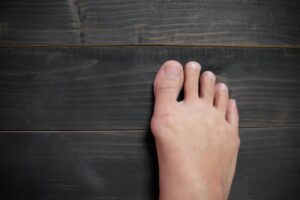Ingrown Toenail? Try These Home Remedies

An ingrown toenail is one of the most painful foot conditions you can experience. Ingrown toenails are easy to treat, but you might be uncomfortable while waiting for treatment at Arizona Foot Health in Phoenix, Arizona.
In the meantime, there are easy home remedies that can relieve your discomfort. Podiatrists Ryan Golub, DPM, and Zachary Flynn, DPM, AACFAS, recommend these treatments for ingrown toenails that you can do yourself at home.
What problems do ingrown toenails cause?
An ingrown toenail is a nail mistakenly grown into the skin surrounding your toe. The main challenge you’re likely to experience is pain.
In addition, ingrown toenails can be swollen, irritated, and red. The longer the ingrown toenail goes untreated, the higher the risk of infection.
Treating an ingrown toenail at home
You shouldn’t attempt to remove the ingrown toenail from the skin on your own. You risk causing an infection and potentially other complications.
While you’re waiting for an appointment for ingrown toenail removal, there are home remedies you can do to increase your comfort and reduce your risk of infection. Try these remedies for relief.
Soak the nail
Soaking the ingrown toenail in warm water for 15-20 minutes at a time helps soften the nail and relieve discomfort. For additional relief, you can add Epsom salt or mild soap to the water.
After soaking the nail, dry it completely with a towel. You can soak your foot up to three times per day.
Use antibiotic cream
Once your foot is dry, you can apply an over-the-counter antibiotic cream. This helps reduce your risk of developing an infection.
Loosely bandage the toe once you’ve applied the cream. You can also try using petroleum jelly on the impacted area to improve lubrication and comfort.
Wear comfortable shoes
Tight, constricting shoes, or shoes that push your toes up to the front of the toe box, will make your ingrown toenail even more painful. Supportive sandals or open-toed shoes are the easiest on an ingrown toenail while your toe is loosely bandaged.
If you can’t wear open-toed shoes, wear flat, closed-toed shoes with plenty of space. In particular, ensure the shoes have plenty of room in the toe box.
If you wear socks, they should be loose and avoid any seams that press uncomfortably on the toe. Aim to wear socks that are made from a light, breathable fabric.
Use an ingrown toenail protector
If a loose bandage isn’t doing the trick on its own, you can buy various toe protectors over the counter. They can cover just the nail or the whole toe.
Ingrown toenail protectors help protect your nail from friction and damage if you bump the toe and reduce the pressure on the nail.
Take medication for pain
Over-the-counter pain medication can offer short-term relief if your ingrown toenails are still painful. Ibuprofen helps reduce any swelling, while acetaminophen helps lower pain levels.
While you perform home remedies on the nail, be sure to make an appointment for ingrown nail removal as soon as possible. Getting the ingrown toenail out of the toe and treating any infection with antibiotics provides the greatest relief.
Ingrown toenail removal is an easy and quick in-office procedure. Contact us to make an appointment to correct an ingrown toenail.
You Might Also Enjoy...
The Achilles Heel
Given Arizona’s climate, patients are able to remain active year round. It’s why we all chose to live here. But…
Alleviating Back Pain and Other Benefits of Custom Orthotics You Didn’t Know About
Would you ever imagine that custom foot orthotics could improve your quality of life? That’s what many people say after…
9 Helpful Tips to Prepare Your Home Before Bunion Surgery
When moderate interventions, such as wearing wider shoes or using pads in your shoes, fail to ease your bunion pain…
When Should You Go to the Doctor for an Ingrown Toenail?
In most cases, you can nurse an ingrown toenail at home with over-the-counter pain medication, topical antibiotic creams, and soaking…
6 Home Exercises to Keep Your Ankles Strong
Ankles that feel wobbly and weak are vulnerable to injury. If you play sports, run, jump, or just walk often,…
Is Surgery My Best Option For Treating Bunions?
You have a bunion and it isn’t pretty, but if your bunion is small enough, or doesn’t hurt, you may…






